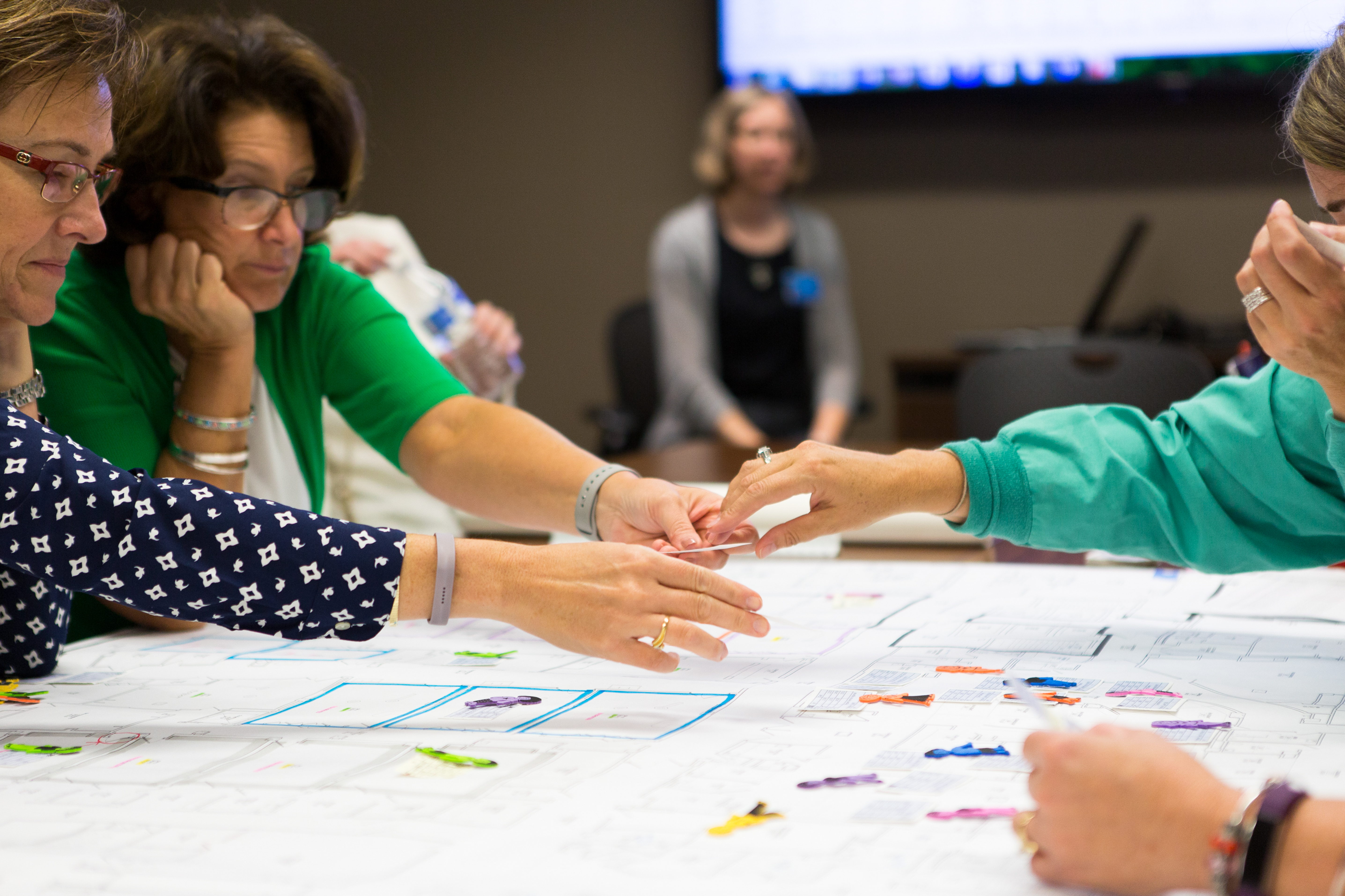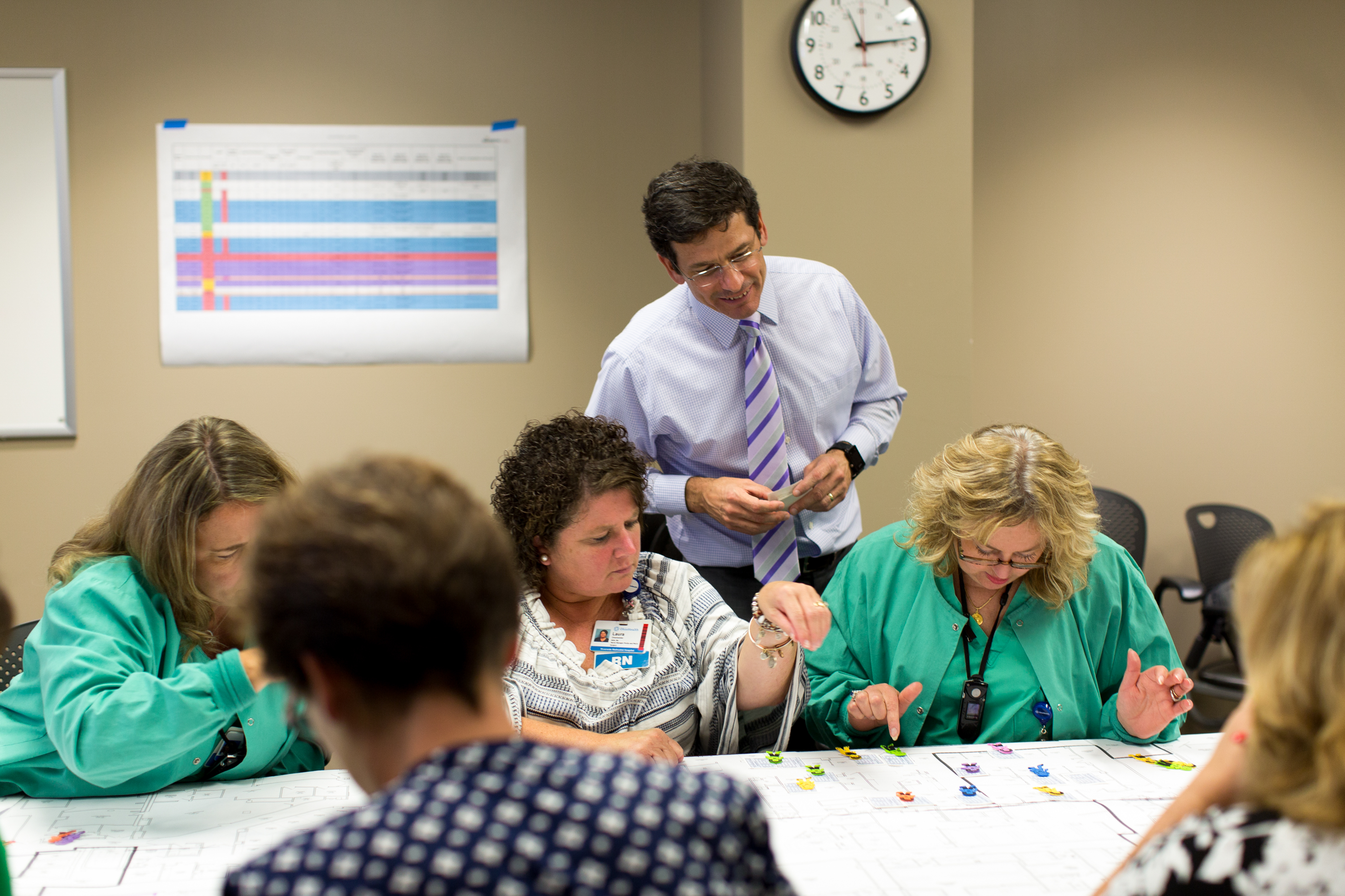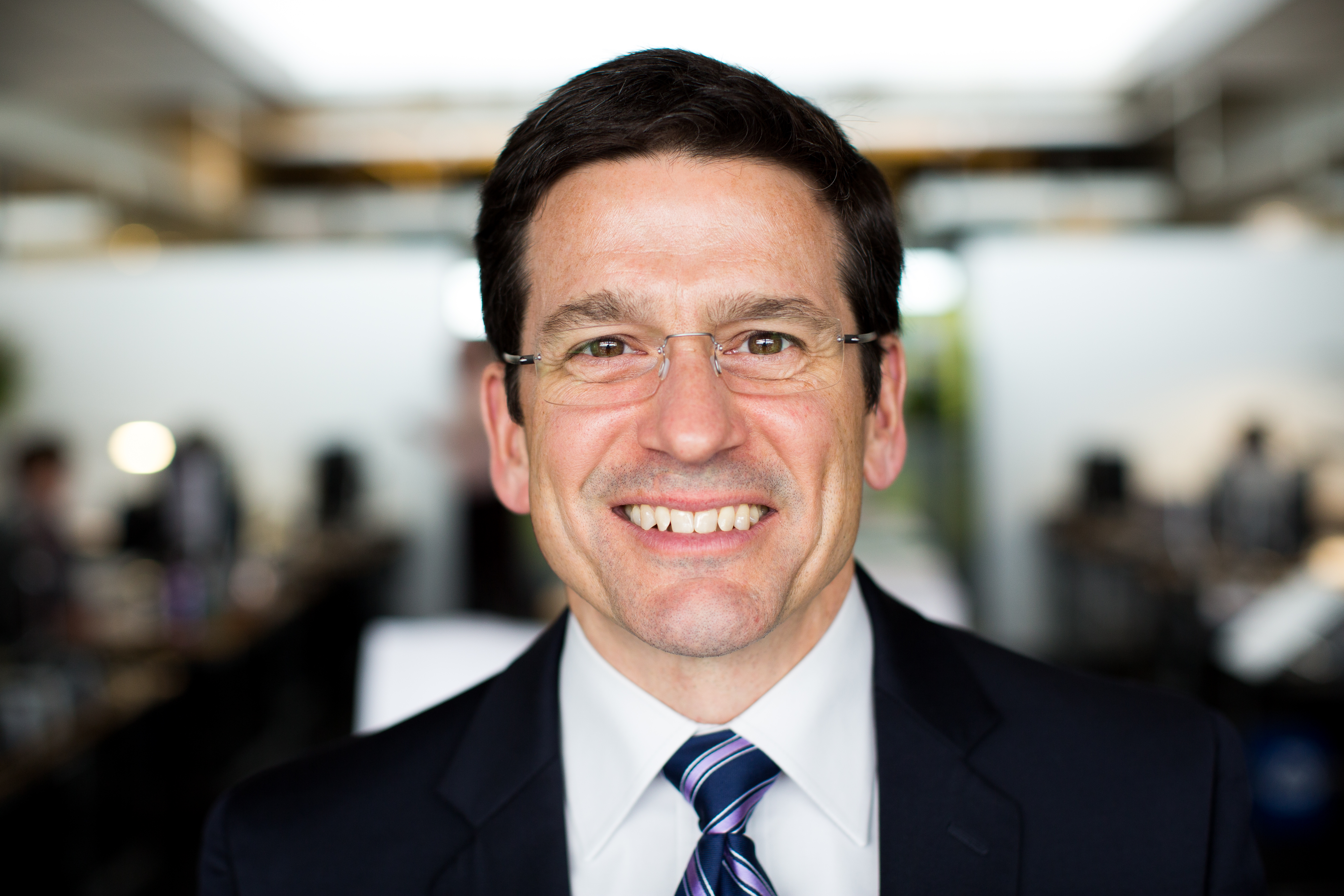Five key insights for this transitional phase of a project, based on real-world experiences.
By Sherm Moreland
AIA, ACHA, LEED AP BD+C
CEO
It’s a crucial stage of what we do – the moment project ideas, fueled by necessity and inspiration, move from planning (shaping ideas) to architecture (the real commitment of time, resources, and capital). What makes for successful transition from concept to project execution? It’s something we think about every day.
In more than 35 years of planning healthcare facilities across the nation, I’ve refined my thoughts about this many times over and landed on five key ideas that share one thing in common: the power of a small but mighty word: “and.” Architecture is most successful when fully integrated with planning. Here’s what I mean.
1. A Master Plan is both a framework AND an opportunity for refinement.
Master plans serve a purpose to explore and advance ideas and aspirations, and establish the scope and expectations for change and growth. The successful conversion from planning to architecture is the highest compliment; the commitment of time, resources, and capital to physically build an idea is the ultimate measure of planning success. Yet, while plans are a great foundation in this process, they often require further refinement, be it additional stakeholder engagement, operational flows made real, or budget assumptions clarified. In my experience, projects that engage the same team from planning to architecture result in greater success.
2. It's important to listen AND lead.
In the book The 7 Habits of Highly Effective People, Covey emphasizes the importance of “Seeking first to understand, then to be understood.” Empathy and understanding are non-negotiable first steps in all we do. When ideas are originally conceived, it's almost expected that stakeholders responsible for different aspects of the business will interpret success in different ways. DesignGroup’s approach relies heavily on Lean tools such as "go slow to go fast" and to define “Conditions of Satisfaction” (see below). Using tailored formats for discovery, we first seek to understand each stakeholder’s definition of project success. Advancing the plan requires more than casual consensus. The Planner’s job is to build and ensure understanding and alignment around common goals at all levels of the organization to avoid rework and schedule slippage in later phases.

3. It’s essential to accomplish both the Conditions of Satisfaction AND the budget.
DesignGroup embraces both Lean and Deming practices, so “going to the gemba” and determining Conditions of Satisfaction are foundational to our approach. “The problem you name is the problem you solve” is key for planners, and asking why five times ensures we’ve identified the right problem. But Conditions of Satisfaction that aren't tethered to a budget or cost estimate are merely wish lists. Limits of capital availability and constraints demand that the best plans – executable plans – accomplish both.
4. High-fidelity plans require the unique blend of both planning leaders AND doers.
There’s a quote I love that’s attributed to a legendary coach: “You win with people.” Winning architecture teams involve both leaders and doers. Planning leaders traditionally bring years of experience with plans of various scale and complexity, which gives them a valuable depth and insight to myriad recommended solutions. Simply put, they cut through clutter. Planning doers are experts at converting market need to KPUs and best practice trends. They write the programs, draw the planning options and, ideally, stay engaged with the project until plans are approved and construction documents are developed. Make sure your team has both.
5. A vote of confidence from the owner galvanizes feelings of trust AND commitment.
My final thought is something I believe clients, amid all the complexities and pressures of a project, often overlook. Architects feel duty bound to creativity, customer service, and delivering best practices. To be selected to create a master plan is only exceeded by being selected again to see that plan through in architecture. When that happens, the result can be unparalleled effort and project success that can't be measured by hours on a time sheet.

If your design and planning professionals can satisfy the five points listed above, transitioning from planning to architecture can allow those early design ideas and aspirations to successfully grow up into architecture. Only through established trust and relationships can you have real conversations. (And – bonus! – with familiarity there’s much less onboarding time for the architecture phase!) Continuation means the team already knows, and has established trust with, the stakeholders.
In my experience, continuation is earned, rarely given. Hiring a dedicated, experienced partner that can leverage the five points listed above will move the entire team closer, and faster, to project success.

Sherm Moreland, AIA, ACHA, LEED AP BD+C | CEO
Sherm is a design-oriented leader who has devoted his entire career to the programming and planning of award-winning, complex healthcare projects nationwide. With 30+ years of healthcare focused experience, clients benefit from his unique depth of industry specific knowledge and understanding of the ever-changing trends that lead to best practice thinking and innovation. Sherm firmly believes in having a bias for action and the value of teamwork and collaboration as the best path for enduring project success.
